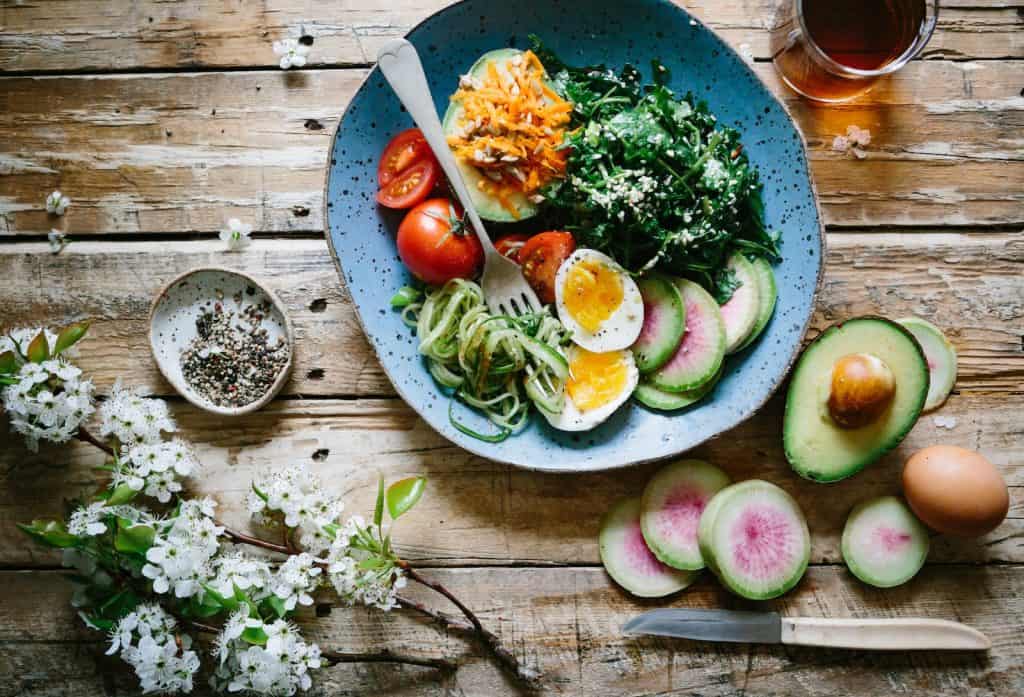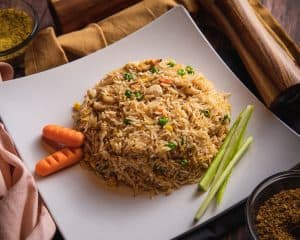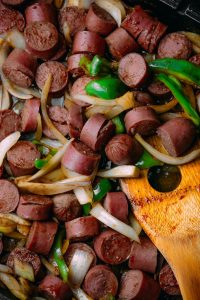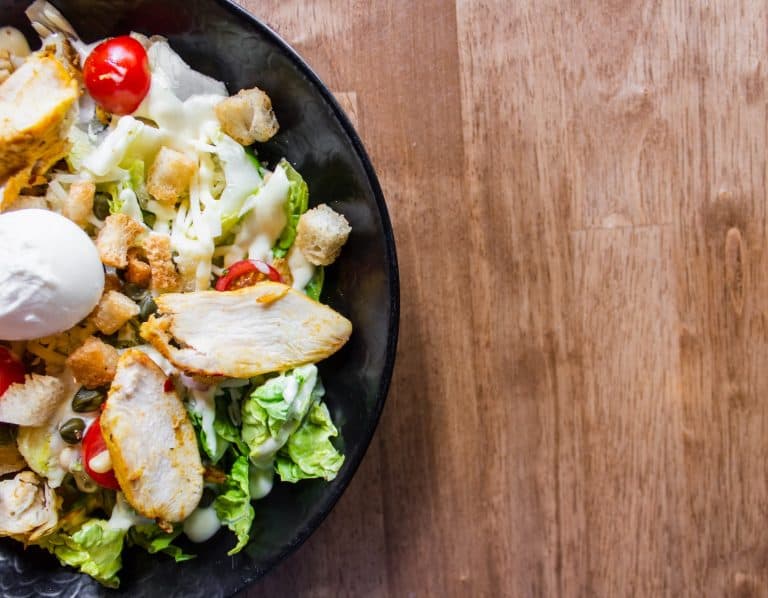What should lunch consist of? When it comes to healthy eating, lunch is often overlooked. Many people find themselves grabbing a quick bite on the go, reaching for processed foods or eating out. However, a well-balanced lunch is essential for maintaining energy, concentration, and overall health. In this blog post, we will explore what a well-balanced lunch should consist of, provide tips for building a healthy lunch, discuss the benefits of a well-balanced lunch, offer suggestions for specific groups, and highlight common lunch mistakes to avoid.
A well-balanced lunch should consist of nutrient-dense foods that provide the body with the energy it needs to get through the day. This includes a combination of protein, carbohydrates, and healthy fats.
The Components of a Well-Balanced Lunch

Protein is an essential component of a well-balanced lunch. It helps keep us feeling full and satisfied, and it provides the body with the necessary building blocks to repair and grow. Examples of protein-rich foods include boiled eggs, chicken salad, nut butter, feta cheese, and sliced turkey.
Carbohydrates provide the body with energy, but it’s important to choose complex carbs that provide sustained energy, rather than simple carbs that can lead to a crash. Whole grains, such as brown rice, whole grain bread, and whole grain crackers, are excellent choices. Additionally, fruits and vegetables can provide healthy carbs and are excellent sources of fiber and essential vitamins and minerals.
Healthy fats are another crucial component of a well-balanced lunch. They help keep us feeling full, provide the body with energy, and support brain function. Examples of healthy fats include olive oil, almond butter, and avocado.
What Should Lunch Consist of for Specific Groups?
It’s essential to consider individual needs and preferences when building a well-balanced lunch. Athletes, for example, may require more carbohydrates to support their physical activity. Brown rice, whole grain bread, and quinoa are excellent sources of complex carbs that can provide sustained energy. Additionally, sliced veggies and boiled eggs can offer protein and healthy fats.
For younger children, getting them involved in the packing process can be a fun way to encourage healthy eating habits. Bento boxes or plastic containers with fun designs can make lunchtime more exciting. Sliced fruits, carrot sticks, and whole grain crackers with peanut butter or almond butter are great options for a child’s lunch box. It’s important to avoid sugary drinks, sports drinks, and other processed foods.
Vegetarians and vegans can still build a well-balanced lunch that provides all of the necessary nutrients. Protein-rich plant-based foods, such as tofu, tempeh, beans, nuts, and seeds are excellent options. Additionally, unsweetened almond milk or soy milk can provide a good source of calcium and other essential vitamins and minerals.
Tips for Building a Healthy Lunch
When packing a healthy lunch, it’s important to consider portion sizes and the nutritional value of each component. Here are some tips for building a healthy lunch:

- Incorporate whole grains: Swap out white bread or pasta for whole grain options like brown rice, quinoa, or whole grain bread. Whole grains are high in fiber, which helps keep you full and satisfied throughout the day.
- Add fresh fruit and vegetables: Incorporating fresh produce into your lunch is a great way to add flavor and nutrients. Try sliced veggies like bell peppers, cucumber, carrot sticks, and snap peas, or fruits like apple slices and cherry tomatoes. You can also include a green salad or broccoli florets.
- Include a source of protein: Protein is important for building and repairing tissue, maintaining healthy muscles, and supporting the immune system. Some healthy sources of protein include boiled eggs, sliced deli meats, chicken salad, hummus, and nut butter. Vegetarians and vegans can opt for plant-based protein sources like chickpeas, lentils, or tofu.
- Choose healthy fats: Healthy fats, like those found in olive oil, avocado, nuts, and seeds, are important for heart health and brain function. Try including some sliced avocado or homemade guacamole, feta cheese, or a handful of nuts or seeds.
- Portion control: When packing your lunch, it’s important to consider portion sizes. A balanced lunch should consist of roughly 50% vegetables, 25% protein, and 25% carbohydrates. Aim for a lunch that is between 400-600 calories.
- Get creative: Don’t be afraid to mix things up and try new foods and combinations. For example, you could try a greek salad with grilled chicken, whole grain crackers, and sliced apples with almond butter.
The Benefits of a Well-Balanced Lunch

Eating a well-balanced lunch can provide a variety of benefits, including improved energy, concentration, and overall health. When you eat a balanced meal, your body gets the nutrients it needs to function properly, which can help you feel more alert and focused throughout the day.
Research has shown that people who eat a balanced lunch are less likely to experience a mid-afternoon energy slump or to overeat later in the day. Additionally, people who eat a balanced lunch tend to make healthier food choices overall, which can lead to better weight management and improved long-term health.
What Should Lunch Consist of for Specific Groups?
When considering what should be in your lunch, it’s important to consider individual needs and preferences. Here are some tips for specific groups:
- Athletes: Athletes require more calories and protein to fuel their bodies and support their activity levels. In addition to a source of lean protein, like chicken or turkey, athletes should include whole grains, like brown rice or whole grain bread, and plenty of fruits and vegetables. It’s also important to stay hydrated with water or a sports drink.
- Children: When packing a child’s lunch, it’s important to involve them in the process and consider their individual preferences. Opt for nutrient-dense foods like whole grain crackers, sliced veggies with hummus, hard-boiled eggs, and plain greek yogurt with berries. Avoid sugary drinks and processed foods.
- Vegetarians and vegans: Vegetarians and vegans should aim to include a source of plant-based protein, like tofu or tempeh, along with plenty of vegetables and whole grains. Nut butter, nuts, and seeds can also provide a source of healthy fats.
Adult Lunch Box Ideas that are Quick and Easy
When it comes to packing a lunch for an adult, there are plenty of ideas that require minimal effort. Here are some easy lunch box ideas:
• Mason jar salads: Layer fresh greens, veggies, protein, and dressing in a mason jar for a salad that can be enjoyed at work or on-the-go.
• Grain bowls: Combine cooked grains like quinoa with chopped veggies, beans or legumes, and a topping of your choice (nuts, seeds, avocado, etc.) for a nutrient-packed lunch.
• Pasta salad: Cook some whole grain pasta, add your favorite vegetables and lean protein (like grilled chicken or salmon), and top with a homemade vinaigrette.
• Wrap: Spread hummus or guacamole on a wrap, then add lean protein (grilled chicken, turkey, tuna salad, etc.) and your favorite vegetables.
Packing well-balanced meals can help you stay energized and focused throughout the day while also supporting your overall health. Healthy lunch boxes don’t have to be complicated or time-consuming—it just takes a little bit of planning and creativity!
Common Lunch Mistakes to Avoid

When it comes to lunch, there are a few common mistakes that many people make. These mistakes can negatively impact the health and wellbeing of an individual, and can be easily avoided with a little bit of planning and preparation.
One of the most common lunch mistakes is skipping lunch altogether. This can be particularly problematic for individuals who have busy schedules and often feel like they don’t have time to sit down and enjoy a meal. Skipping lunch can lead to a drop in blood sugar levels, which can cause fatigue and sluggishness. In addition, skipping lunch may cause an individual to overeat during other meals, leading to weight gain and other health issues.
Another common lunch mistake is relying on processed foods. Many pre-packaged meals and snacks are high in calories, sodium, and added sugars. These foods lack the nutrients that the body needs to function properly, and can cause a range of health issues, including high blood pressure, high cholesterol, and obesity. Instead, individuals should focus on packing meals with nutrient-dense foods, such as whole grains, fresh fruits and vegetables, and lean proteins.
Finally, another common lunch mistake is consuming sugary drinks. While sports drinks and sodas may seem like a quick and easy way to boost energy levels, they are often loaded with added sugars and calories. Instead of sugary drinks, individuals should opt for water, unsweetened tea, or low-fat milk. These drinks are lower in calories and provide the body with the hydration it needs to function properly.
Final Thoughts: What Should Lunch Consist Of?
When it comes to packing lunch, the key is to focus on nutrient-dense foods that provide the body with the energy and nutrients it needs to thrive. This means meal prep that contains plenty of fresh fruits and vegetables, whole grains, lean proteins, healthy fats, and plant-based proteins. In addition, individuals should aim to limit their intake of processed foods and sugary drinks. Healthy lunch ideas don’t have to be complicated—with a little bit of creativity, packing a nutritious lunch can be easy and delicious!
So, the next time you’re wondering what to pack for lunch, think nutrient-dense foods that provide energy and nourishment – it doesn’t have to be complicated or time-consuming!
Other suggested articles:

